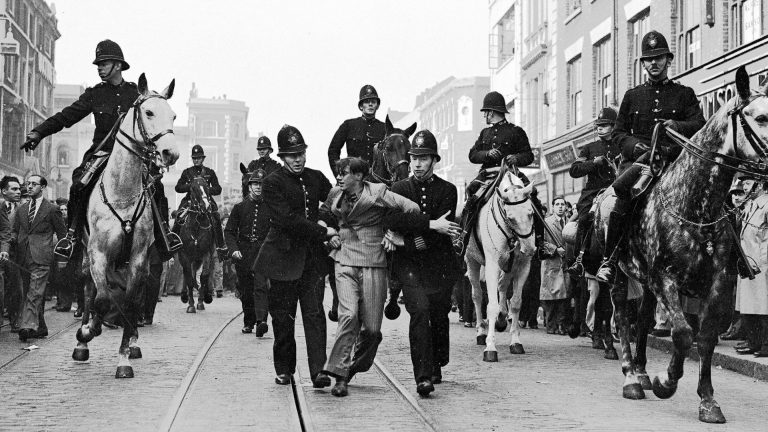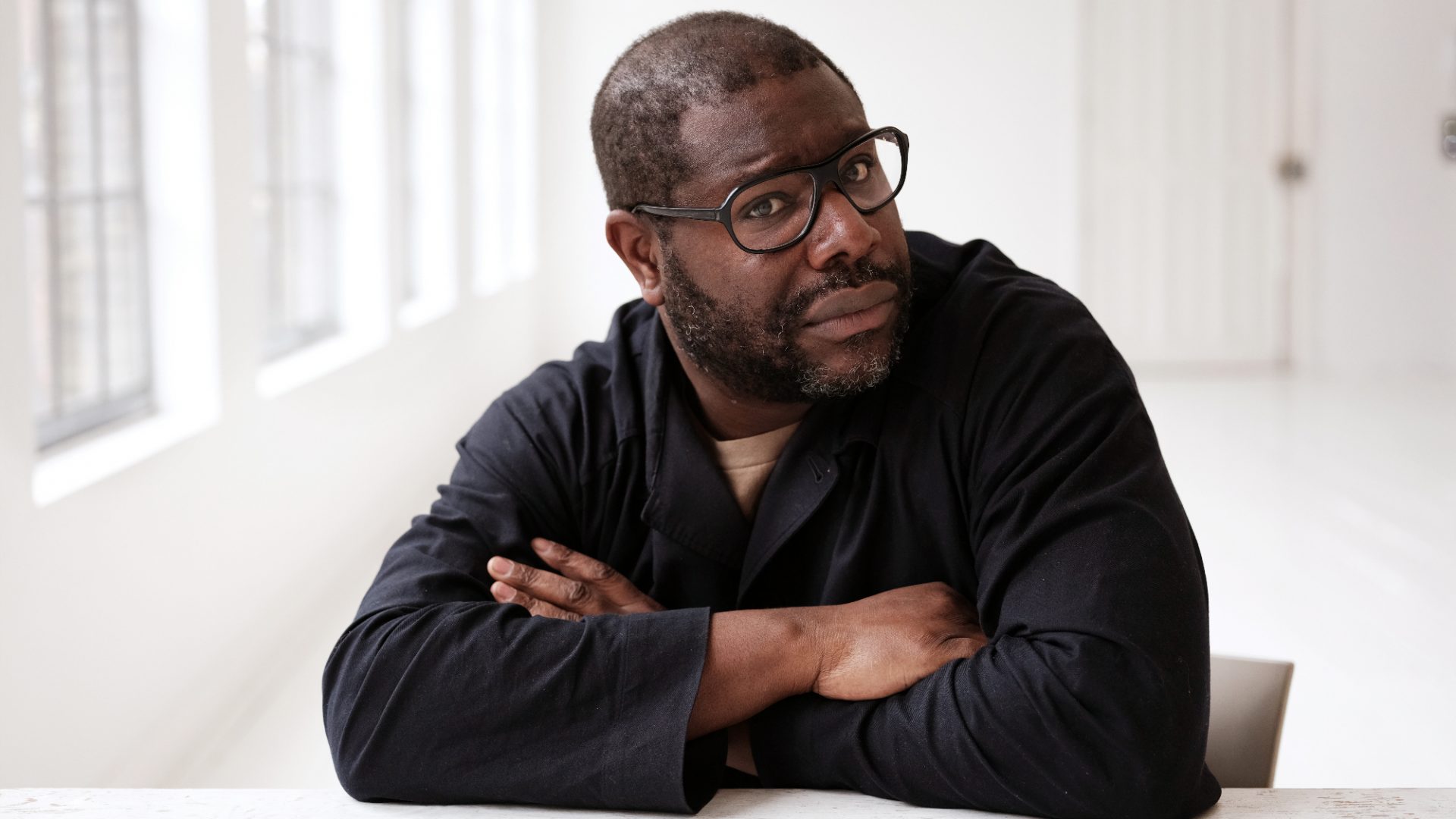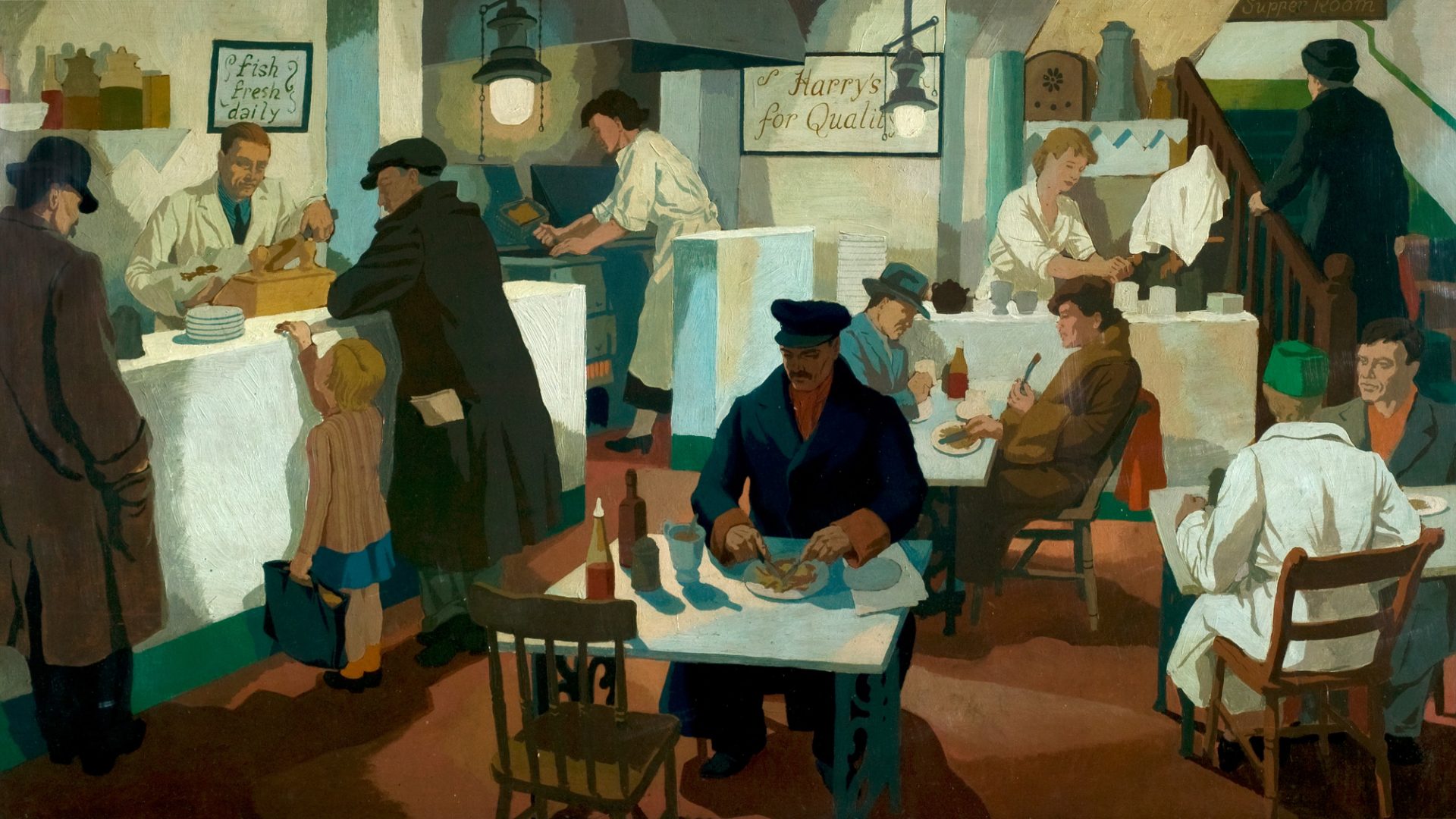There are several cities in Occupied City and they are all Amsterdam. The 2023 film by Oscar-winning director Steve McQueen delivers a cinematic tour of the city, contemporary footage of buildings as seen during the pandemic. To this he has married a voiceover explaining what happened to the Jewish residents of these houses during the Nazi occupation between 1940 and 1945. We are shown Amsterdam today – with its students, cannabis cafes, sex workers and elegant grandees – and we hear about Amsterdam then, when it was a city at war.
But other Amsterdams also emerge. We get echoes of a pre-war metropolis, with bustling trade and traditions. And there is a whisper of a question: how would Amsterdam look if the Allies had lost? “Living in Amsterdam feels like living with ghosts,” says McQueen. “The past is always present.”
For nearly three decades McQueen has lived between London and Amsterdam, the home town of his wife, Dutch historian Bianca Stigter. Sitting in the Rijksmuseum, in the midst of Rembrandts, Vermeers and hordes of tourists, McQueen tells me why he has now turned his original four-hour work into two hybrids: a silent presentation of the modern-day footage on the museum’s facade – a “mirror to the city” – and a 34-hour version with sound and subtitles that covers more than 2,000 addresses, a kind of extreme director’s cut, shown in the institution’s auditorium.
Occupied City takes an outsider’s viewpoint. McQueen is neither Dutch nor Jewish. “I’m a human being, that’s my in. That’s my passport to all of this.” he says. “I can’t detach myself from humanity.” The film is a valuable historical record refracted through a contemporary lens. The meat of the piece is its source material, Stigter’s book Atlas of an Occupied City, a horribly detailed survey of the Jewish homes and the fate of their residents. This provides the text for the film’s voiceover and the substructure to the beautifully framed contemporary footage by the Dutch cinematographer Lennert Hillege. Through the litany of historical horrors, fun-filled present-day locations – parks, pools, shops – become a constellation of scars.
Amsterdammers experienced an unequal wartime trauma. Some resisted the Nazis, some collaborated. The Jewish community felt the worst of it. Some 60,000 Jews from Amsterdam perished, and the Netherlands had the highest death rate of Jewish people in western Europe. And the Dutch city is not entirely at peace over what occurred here 80 years ago. “There’s a lot of amnesia, there’s a lot of nonchalance about it,” says McQueen. “It’s not been dealt with.”
Suggested Reading

Steve McQueen and the art of resistance
At the end of the war, people just wanted to get on. “It’s just like in the Blitz, keep calm and carry on or stiff upper lip,” says McQueen. “If it’s kept in, how does it come out? We’re still dealing with that now in relationships with parents or grandparents.” McQueen addressed lesser-known aspects of the aerial bombing of London in his 2024 feature Blitz. The “dramatic residue” from the war years continues to have an impact, McQueen explains, because an objective understanding of the events too often gets “swept under the carpet”.
I’m curious to know how he defines Occupied City. Is it a documentary, an art film, a feature? “All of that,” he says, cracking a fleeting smile. However, the rejigs at the Rijksmuseum are problematic. Without the context of the voiceover, the silent screening on the museum’s facade looks like a presentation from the city’s tourist office.
Meanwhile, inside, the 34-hour cut will test the patience of viewers (there will even be an overnight screening). But McQueen believes the film’s length adds to its overall effect. “It’s a space that allows you to slow down,” he says. The film delivers layer upon layer of tragedy; there were so many Anne Franks. “That’s the beauty of film, it doesn’t need to be within the narrative tradition. This is another way of looking at it. For me it’s not about how much you put in. You could stay there for an hour, two hours, half an hour, 20 minutes. It’s what you take out.”
The Rijksmuseum’s collaboration with McQueen is part of Amsterdam’s 750th anniversary celebrations. But it also coincides with several contemporary instances of occupation and persecution. “When we made this film, October 7 hadn’t happened,” says McQueen. “The Ukraine war actually started whilst we were making this picture. Somalia didn’t start until towards the end. The fact that this is asking questions about the present day is the success of the film.”
Could he bring the movie’s unusual format to bear on another city’s wartime experience? “We’ve been asked: Occupied City Paris,” he says, adding that here is a huge appetite for untold angles on the second world war and the European landscape it irrevocably altered. “I think people are always interested in how they get here,” he says. “Who am I within the context of the city?”
Occupied City at the Rijksmuseum, Amsterdam, until January 25, 2026.
Christian House is a freelance arts and literature journalist



